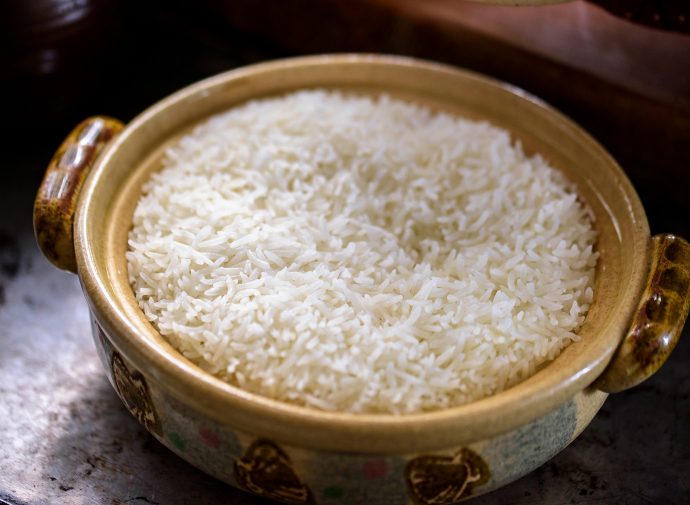by Fadia Jawdat
My mother and grandmother cooked rice daily. In our house in Lebanon, the main family meal was often a seasonal vegetable stew, served over rice. Mother also prepared mahashi, literally translated “the stuffed ones.” She would fill hollowed courgettes and small eggplants, grape leaves, cabbage or chard with a mixture of rice and onions, spices and herbs, along with ground meat (or chickpeas for a vegetarian version).
It is only when I began cooking on my own that I discovered that different kinds of rice are used for different purposes. For my family’s Palestinian recipes, I remain faithful to aged Indian Basmati. Each grain holds its own, remaining separate but tender, allowing the rice to mix in with the delicious juices of the stew, without becoming mushy.
Making the perfect rice does not happen overnight. Trial and error are the name of the game. Choosing the best method, finding your own ratio of water to rice, and experimenting with different varieties and brands of long-grain rice take time. With helpful tips from my mother, husband and father-in-law, I have spent years practicing and persisting in the search for the quintessential method. If you enjoy perfectly cooked basmati rice, you will find this effort worthwhile.
– Fadia Jawdat
Basic Method for Cooking Basmati Rice
- Soak the rice in salt water. Preferably boiling water. Use one tablespoon of salt for every cup of rice. I like to soak basmati in the morning before going to work, letting it sit all day. You must soak the rice at least an hour before cooking.
- Using a sieve, rinse the rice under cool running water until the water runs clear.
- Drain well. Melt butter, ghee or vegetable oil in a pan with a tight-fitting lid. Heat the fat until hot but not burning. Dump the rice in and stir around with a wooden spoon until the grains are well coated. Add a little salt.
- Bring water to a boil and using a 1:1 ratio of water to soaked rice, add it to the rice. (I must admit, my mother and I would argue for years about the best ratio of water to rice!) This ratio changes when cooking the rice with added meat or vegetables. In that case I double the water, and keep checking on the rice, adding more water a drizzle at a time until the meat and vegetables, as well as the rice, are cooked.
- After you’ve added the boiling water your whole pot will be sizzling and the water will quickly evaporate. This is a critical time. Let it boil down just to the point where small holes begin to form on the top of the rice. There should be some water still visible on the surface. At that very moment, turn down the heat to low, and quickly seal your pot with its lid. I suggest wrapping the lid with a clean cloth or paper towel in order to trap the steam, keeping it from falling back on the rice.
- Changing the heat from high to the lowest point possible is crucial! It’s easy with a gas flame, but with an electric stove, where the temperature changes more slowly, switch to another burner that you have pre-warmed to low heat.
- Cook for 15 minutes. Check. This is the nerve-wracking stage in the quest for perfectly cooked rice. If the rice begins to stick, add a drizzle more water, cover and cook for a few more minutes. Open your pot and gently fluff the rice, inhaling the fragrant steam.

